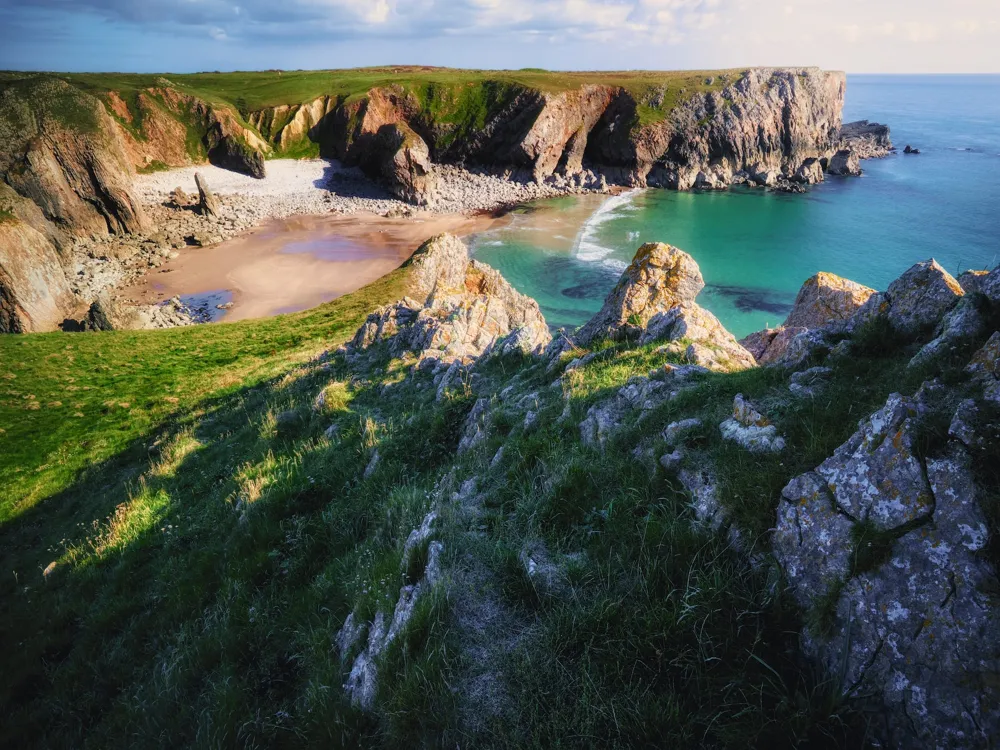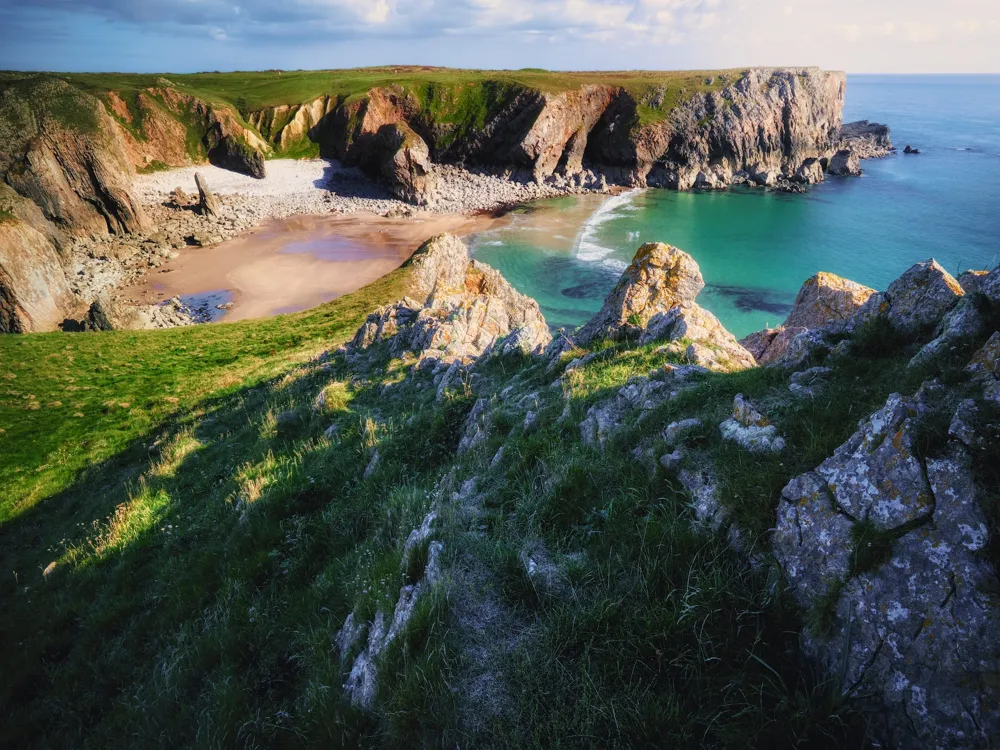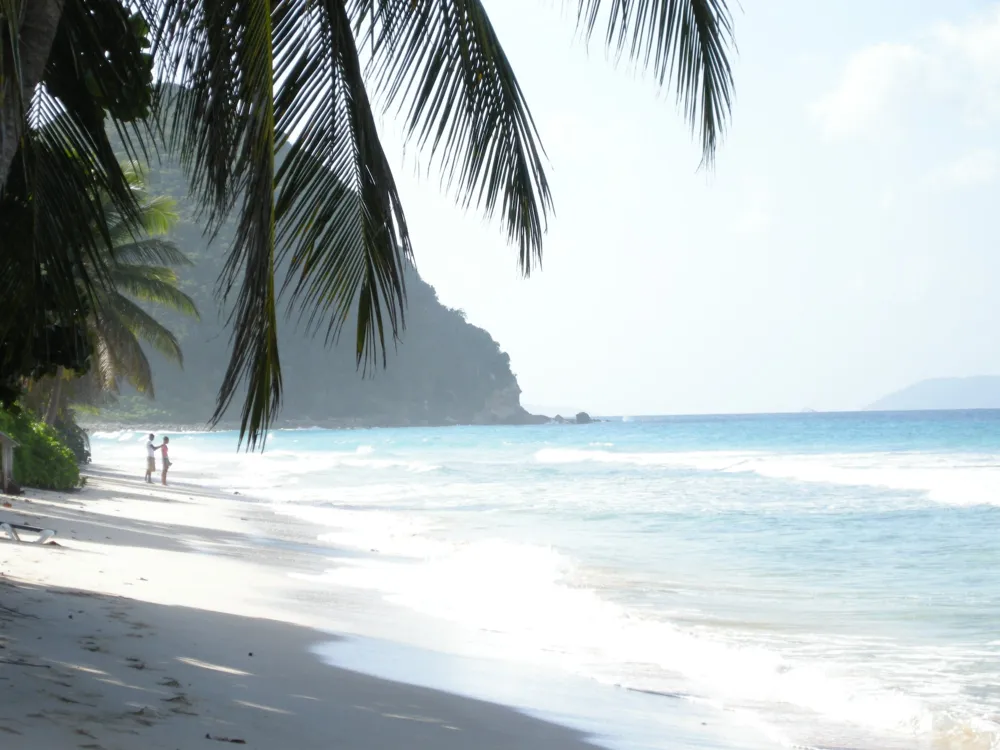Halong Bay, a UNESCO World Heritage site since 1994, is an iconic natural marvel located in the Quang Ninh province of Vietnam. Famous for its emerald waters and thousands of towering limestone islands topped with rainforests, Halong Bay spans an area of around 1,553 square kilometers. This magnificent landscape has been shaped over millions of years by the repeated rise and fall of the sea, creating a unique karst topography. The bay is not only a spectacular seascape but also a place of rich biodiversity with tropical rainforests, coral reefs, and mangroves, hosting many species of flora and fauna. One of the remarkable features of Halong Bay is the presence of various beautiful caves and grottos with intricate stalactite and stalagmite formations. These caves are not just geological wonders but also carry significant historical and cultural values. Popular caves like Dau Go (Wooden stakes) cave, Thien Cung (Heavenly Palace) cave, and Sung Sot (Surprise) cave offer awe-inspiring views and are steeped in local legends and myths. The bay is also home to several floating villages where communities have adapted to life on water. These villages, such as Cua Van and Vung Vieng, provide a glimpse into the traditional lifestyles of the local fishermen. Visiting these floating villages is a unique experience, offering insights into the sustainable living practices in harmony with nature. With its picturesque beauty, Halong Bay serves as a muse for artists and photographers while also being a popular spot for various recreational activities. From kayaking through the karst formations, taking a cruise to explore remote parts of the bay, to enjoying the local seafood, Halong Bay offers a mesmerizing experience to its visitors. The architecture of Halong Bay is not just about the man-made structures but more profoundly about the natural architectural wonders that the area presents. The towering limestone karsts and isles in various shapes and sizes are the most striking architectural elements of Halong Bay. These limestone formations, some rising as high as 100 meters, are the result of millions of years of weathering and evolution. They give Halong Bay its unique and surreal appearance, often compared to a scene from a fantasy movie. The human influence on Halong Bay's architecture is seen in the traditional junks and modern cruise ships that sail its waters, and the quaint floating villages. The boats and ships, often with their distinctive red sails, are designed to harmoniously blend with the natural environment. These vessels range from traditional wooden junks to luxury cruise liners, each offering a different way to experience the bay. The floating villages in Halong Bay are another example of unique architecture. These waterborne communities are built on floating platforms and are interconnected by wooden walkways. The houses, made from bamboo and wood, are designed to withstand the elements and the lifestyle of living on the water. These villages are not only homes but also functional spaces for fish farming and other aquatic activities, reflecting a deep understanding and adaptation to the marine environment. In addition to the natural and vernacular architecture, recent developments have introduced contemporary architectural designs in the form of luxury resorts and hotels along the coastline. These structures, while modern in their amenities, are often designed to complement the natural beauty of Halong Bay, using materials and forms that echo the local landscape and cultural heritage. Overall, the architecture of Halong Bay is a harmonious blend of natural wonders and human ingenuity, creating a landscape that is both ethereal and grounded in cultural traditions. The best time to visit Halong Bay is during the spring (March to May) and autumn (September to November) months. During these periods, the weather is more pleasant with less humidity and clearer skies, offering the best conditions for sightseeing and outdoor activities. Selecting the right cruise is crucial for your Halong Bay experience. Consider factors like the duration of the trip, the size of the boat, on-board facilities, and the itinerary. There are options ranging from budget to luxury cruises, each providing a different experience. When packing for Halong Bay, include light and comfortable clothing, swimwear, a good pair of walking shoes, sun protection, and insect repellent. Also, don't forget your camera to capture the stunning scenery. Practice responsible tourism by respecting local customs and the natural environment. Avoid littering, and participate in eco-friendly activities to help preserve the beauty of Halong Bay. Halong Bay is accessible from Hanoi, the capital city of Vietnam, and it takes about 2-4 hours by road. Tourists can opt for shuttle buses, private car transfers, or even seaplanes for a quicker and more scenic route. The nearest airport is Cat Bi International Airport in Hai Phong, from where Halong Bay is approximately an hour's drive away. Alternatively, for a more scenic route, tourists can take a train to Hai Phong and then a ferry to Halong Bay, offering an opportunity to witness the picturesque countryside of Vietnam.Overview of Halong Bay
Architecture of Halong Bay
Tips When Visiting Halong Bay
Best Time to Visit
Choosing a Cruise
Packing Essentials
Responsible Tourism
How To Reach Halong Bay
Vuon Canh Treo Tranh
Halong Bay
₹ 15,260 onwards
View halong-bay Packages
Halong-bay Travel Packages
View All Packages For Halong-bay
Top Hotel Collections for Halong-bay

Private Pool

Luxury Hotels

5-Star Hotels

Pet Friendly
Top Hotels Near Halong-bay
Other Top Ranking Places In Halong-bay
View All Places To Visit In halong-bay
View halong-bay Packages
Halong-bay Travel Packages
View All Packages For Halong-bay
Top Hotel Collections for Halong-bay

Private Pool

Luxury Hotels

5-Star Hotels

Pet Friendly






















